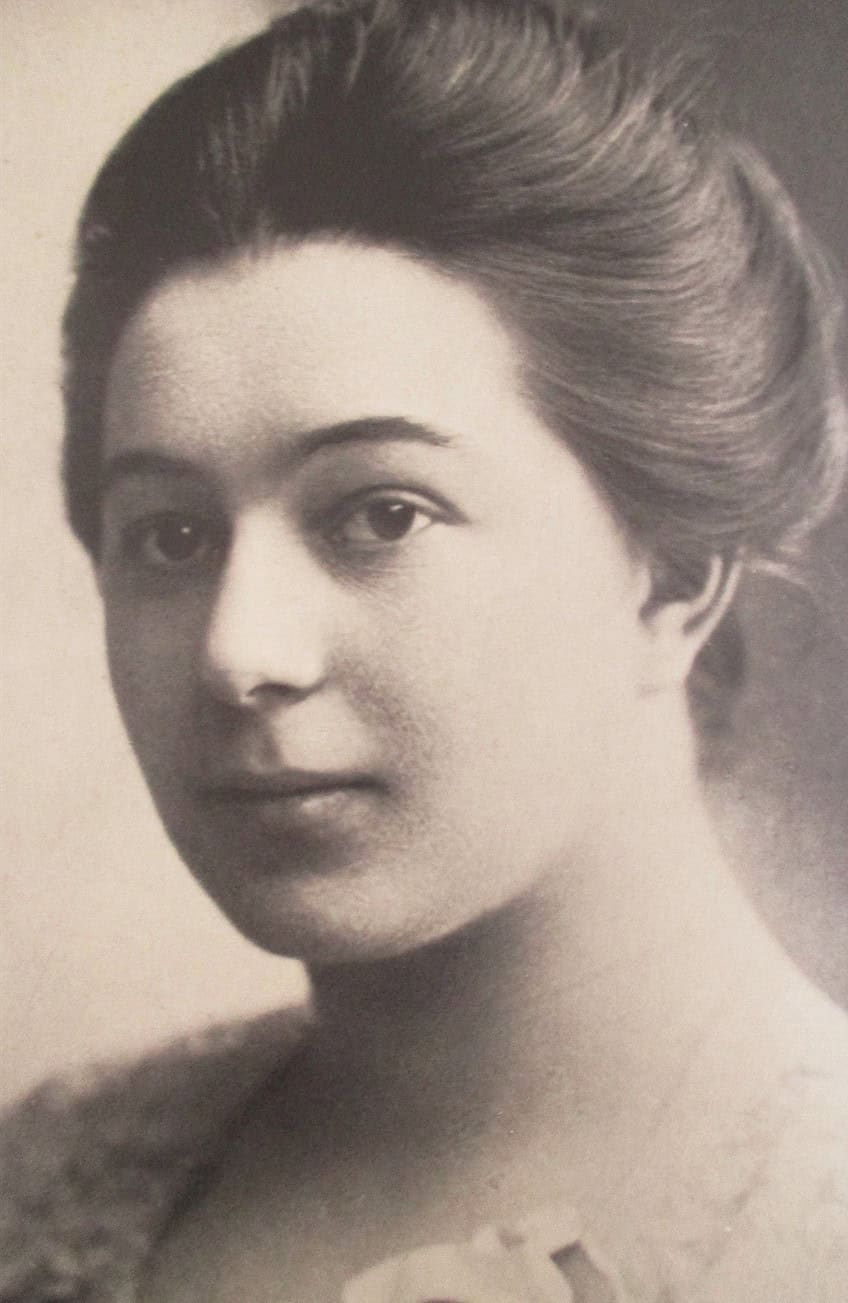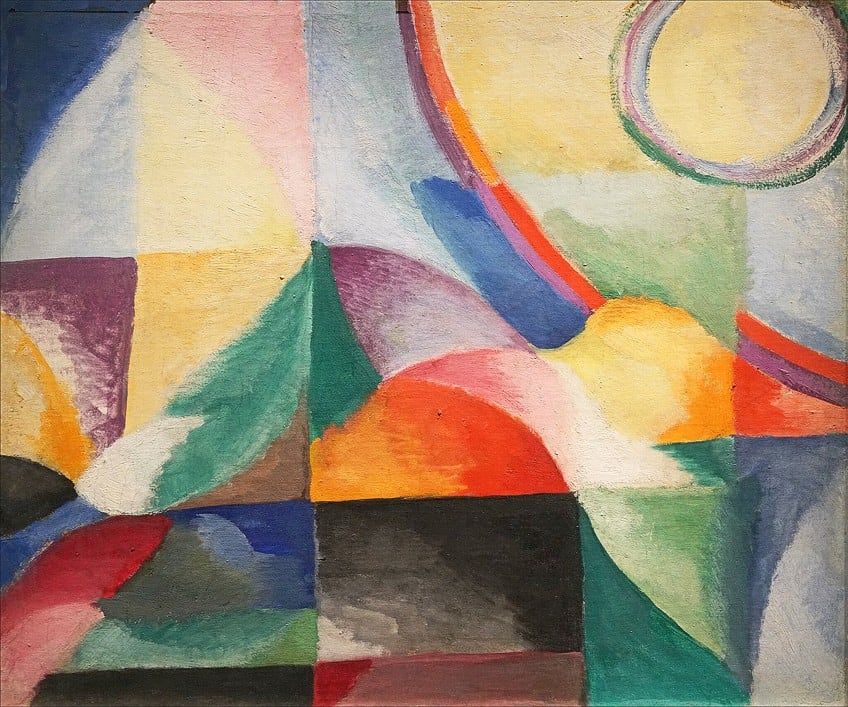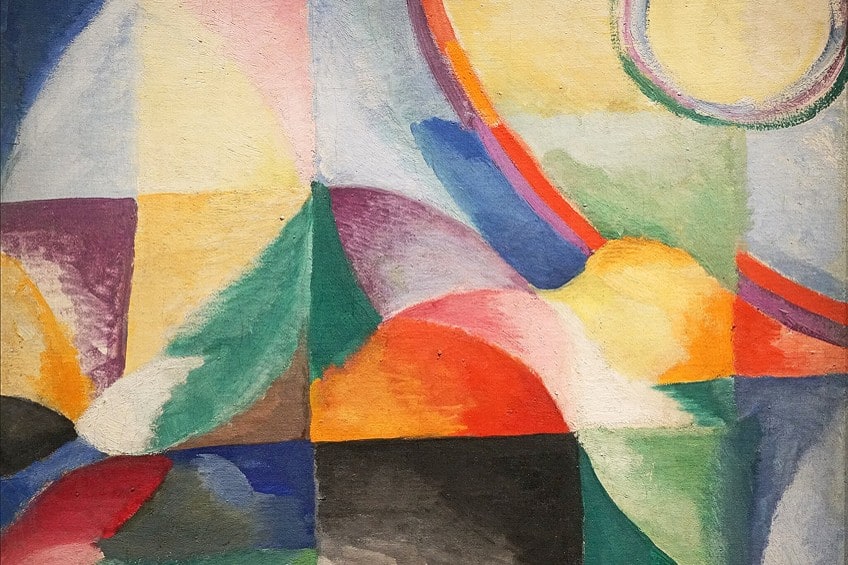Sonia Delaunay – A Pioneer of Simultaneous Contrasts
Sonia Delaunay stands as a beacon of innovation and creativity in the annals of modern art. Renowned for her pioneering work in abstract art, textile design, and color theory, Delaunay’s artistic journey embodies a relentless pursuit of visual harmony and dynamism. Born in Ukraine and later establishing herself in Paris, she navigated the avant-garde circles of the early 20th century, leaving an enduring impact on the realms of art, fashion, and design. Through her bold use of geometric forms, rhythmic patterns, and a kaleidoscope of colors, Delaunay’s art not only challenged traditional boundaries but also continues to inspire generations of artists, showcasing the enduring power of creative vision and innovation.
Key Takeaways
- Sonia Delaunay was a central figure in abstract art and Orphism, known for intertwining fine and decorative arts.
- Her artistic narrative was marked by a profound interest in the theory of color and its application across various mediums.
- Delaunay’s legacy is evident in her influence on the art world and her multidisciplinary approach to the arts.
Early Life and Inspirations
| Birth | November 14, 1885 |
| Death | December 5, 1979 |
| Place of Birth | Hradyzk, Ukraine |
| Genre of Work | Abstract art, Orphism, and textile design |
Sonia Delaunay was a pivotal figure in the Parisian avant-garde and became the European doyenne of abstract art throughout the 20th century. Born in Ukraine in 1885 and moving to France where she spent the majority of her artistic career, Delaunay’s work crossed the boundaries between visual and decorative arts. She was instrumental in the development of Orphism, an art movement characterized by strong colors and geometric shapes, suggesting motion and depth.

Alongside her husband, Robert Delaunay, Sonia explored the dynamic qualities of color and form, which led to their concept of Simultanism—works that reflect a fascination with the science of color contrasts. Her endeavors weren’t limited to painting; she also designed textiles, clothing, and theater sets, merging functional and aesthetic concerns and bringing fine art into everyday life.
Early Training
Born as Sophia Stern on November 14, 1885, in Gradizhsk, Ukraine, then part of the Russian Empire, Delaunay was adopted by her wealthy uncle, Henri Terk, at the age of five and moved to St. Petersburg. There, she received an affluent upbringing and began her formal artistic education.
Her exposure to the vibrant sunsets of Ukraine and the rich cultural tapestry of St. Petersburg would later inform her colorful artistic palette.
Mature Period
In the early 1900s, Delaunay pursued further education in Germany. Subsequently, she relocated to Paris, which was emerging as the epicenter of modern art. Married to French artist Robert Delaunay, she ventured into avant-garde circles where she developed a distinctive style characterized by bold color and geometric shapes. This period marked the crystallization of her signature approach to abstraction, leading to the eventual co-founding of the Orphism movement, alongside her husband.

Later Period and Death
Sonia Delaunay’s creative journey continued throughout her life. Alongside painting, she expanded her repertoire to include textile design and costume-making, with her work reflecting a seamless blend of art and everyday life. Delaunay’s impact rippled through various creative industries, solidifying her legacy in the art world.
She continued to work and inspire until her death on December 5, 1979, in Paris, embodying the persistent innovation that characterized her career.
Rise to Artistic Prominence
In the bustling city of Paris, Sonia Delaunay’s ascent in the art community was fueled by her innovative approach to art and her influential collaborations. Her progression in abstraction and design established her as a dynamic force in the development of Modern Art.
Marriage and Collaborations
Sonia Delaunay’s marriage to French artist Robert Delaunay in 1910 was pivotal in her artistic journey. Together, they worked harmoniously, blurring the lines between fine and applied arts. Their partnership led to the creation of a hallmark of the avant-garde movement, Orphism, characterized by vibrant colors and geometric shapes. Some of their collaborative works included:
- Painting together: An exploration of simultaneous contrasts
- Textile designs: A blend of art and functional design
- La Prose du Transsibérien et de la Petite Jehanne de France: A collaborative piece with poet Blaise Cendrars
Development of Orphism
Defined by its use of strong colors and geometric figures, Orphism became a conduit for Sonia Delaunay to express the rhythm and dynamism of modern life. Delaunay’s application of Orphist principles went beyond painting, permeating the realms of textile design and fashion.
Expanding into Design
Delaunay’s foray into the world of design saw her transcending the canvas and embracing the multidisciplinary nature of the arts. Her scope widened to include creating innovative designs for clothing, textiles, and even interiors.
- Fashion design: Launching her own fashion line
- Textile patterns: Revolutionizing the industry with her bold, abstract prints
- Casa Sonia: A collaborative project in Madrid featuring furniture and wall coverings

Artistic Accomplishments
Sonia Delaunay’s career was marked by significant accomplishments that solidified her status within the School of Paris. Her multi-faceted approach to art-making allowed her to produce work that remained influential and progressive throughout her lifetime. Some of her career milestones included:
- Integration of Orphism into various design disciplines.
- Recognition as a seminal figure in Modern Art circles.
- Establishment as both an artist and a designer of haute couture fashion.
Innovation in Art and Design
Sonia Delaunay’s creative pursuits bridged the gap between art and industry, where her contributions to textiles and fashion paralleled her influence on abstract art.
Contribution to Textiles and Fashion
Sonia Delaunay emerged as a pivotal figure in introducing abstract design into fabric and clothing, thus transforming the world of textiles. Her Simultaneous Dress broke new ground, epitomizing modern design principles through its vibrant colors and geometric patterns.
As both a textile designer and fashion creator, she developed innovative designs for fabrics that often echoed the energy of modern art.
- Fabrics: Often featured bold colors and dynamic geometric shapes.
- Fashion: Delaunay’s clothing designs, including her prominent Simultaneous Dress, employed the same avant-garde aesthetics found in her artwork.
Through her endeavors, she blurred the lines between art and practical design, pushing the boundaries of fashion and establishing a legacy that intimately connected it with modern art and design.
Influence on Abstract Art
Delving into the realm of abstract art, Sonia Delaunay’s work as a painter displayed her mastery of color theory and geometric abstraction. Her approach to Modern Art was characterized by a unique use of color to create rhythm and depth, which she termed “simultanism.” Through this technique, she aimed to reflect the dynamism of modern life.
- Paintings: Illustrated her theories of movement and light, capturing the essence of abstraction.
- Color theory: Incorporated in her art as a method to evoke emotion and movement.
Delaunay’s contributions to abstract art continue to resonate, enshrining her reputation as an innovator who seamlessly integrated color, geometry, and abstraction across multiple artistic disciplines.
Notable Artworks by Sonia Delaunay
Sonia Delaunay was an innovative artist known for her bold use of color and geometric patterns. A selection of her most significant artworks includes:
- Le Bal Bullier (1913): This vibrant painting captures the rhythm and movement of the famous Parisian dance hall, employing Delaunay’s distinctive concentric circles and rhythmic geometric forms.
- La Prose du Transsibérien et de la Petite Jehanne de France (1913): A collaborative piece with poet Blaise Cendrars, this is a prime example of how Delaunay applied her art to various mediums. The artwork is a combination of abstract shapes and color that complements Cendrars’ poem.
- Simultaneous Dresses (The Three Women) (1925): This work exemplifies her venture into textile design and fashion, showcasing the simultaneous contrasts and abstract forms that characterize her style.
- Rythme Couleur (1964): A later painting displaying her continued exploration of color and form, it represents the maturity of her artistic vision over the decades.
A pioneer in the Orphism movement, alongside her husband Robert Delaunay, Sonia Delaunay’s contributions to both fine and applied arts were influential in the development of abstraction in the early 20th century. She adeptly applied her innovative approach to various surfaces and materials, integrating art into daily life.
Legacy and Recognition
Sonia Delaunay’s transformative effect on art and design is recognized through major exhibitions and honors, her pervasive influence, and her continued presence in contemporary realms.
Major Exhibitions and Honors
Sonia Delaunay has been honored with numerous retrospective exhibitions, celebrating her innovative career as both an artist and fashion designer. The Louvre Museum, an epitome of art prestige, showcased her work, marking an exceptional honor rarely accorded to living artists at the time.

Delaunay’s achievements were further recognized when she became the first living female artist to have her work exhibited in the Louvre in 1964. Additionally, she was awarded the French Legion of Honor, underscoring her impact on French art and culture. Some of her major exhibitions took place at the Louvre Museum in Paris (1964), retrospectives at the Musée National d’Art Moderne and Galerie Suzanne Michel, and a solo show at Galerie Bing (1951).
Influence and Lasting Impact
Delaunay’s legacy in the arts and fashion design is marked by her distinctive integration of bold color, geometric forms, and innovative textile designs. Her work paved the way for the modern fusion of art and fashion, influencing countless designers and artists.
Her contributions to the creative world extended beyond painting to encompass craft and design, echoing through the collections of modern fashion houses and in the approach to color and pattern in contemporary design.
Legacy of Sonia Delaunay Today
Sonia Delaunay remains a revered figure in the art world today, with her creations featured in prominent collections worldwide. From New York to Paris, her legacy continues to inspire and attract new generations. The timelessness of Delaunay’s work is evident as her designs and paintings are still studied, exhibited, and celebrated for their vibrancy and pioneering spirit. Current retrospectives perpetuate her significance, firmly establishing Delaunay as a central figure in the narrative of 20th-century art and design.
Sonia Delaunay’s artistic legacy is a vibrant tapestry of innovation and creativity that continues to captivate art enthusiasts worldwide. Her groundbreaking work in the realms of abstract art, textile design, and color theory not only revolutionized the visual arts but also left an indelible mark on the fashion and design industries. Delaunay’s bold use of geometric shapes, rhythmic patterns, and dazzling colors reflected her pioneering spirit and passion for artistic expression. As a key figure in the development of modern art, her influence resonates through generations, inspiring artists to explore new avenues of creativity and pushing the boundaries of artistic conventions.
Frequently Asked Questions
What Was Sonia Delaunay Best Known for in Her Artistic Career?
She was renowned for her bold use of color and geometric patterns, which became a hallmark of her extensive oeuvre that encompassed paintings, drawings, textiles, and garments.
Which Artistic Movement Is Closely Associated With Sonia Delaunay’s Works?
Sonia Delaunay’s works are closely associated with Orphism, an offshoot of Cubism that focused on pure abstraction and vivid color to create rhythm and depth in artworks.
What Impact Did Sonia Delaunay Have on the Fashion Industry?
Her vivid designs and innovative approach to fabric and clothing design left a lasting impact, transforming the fashion industry with her avant-garde patterns and vibrant colors that were distinct and immediately recognizable.
Which Painting Techniques Did Sonia Delaunay Commonly Employ in Her Artwork?
Sonia Delaunay commonly utilized Orphism techniques, emphasizing strong color contrasts and geometric shapes to produce dynamic, non-objective imagery with expressive color harmonies and rhythms.
Isabella studied at the University of Cape Town in South Africa and graduated with a Bachelor of Arts majoring in English Literature & Language and Psychology. Throughout her undergraduate years, she took Art History as an additional subject and absolutely loved it. Building on from her art history knowledge that began in high school, art has always been a particular area of fascination for her. From learning about artworks previously unknown to her, or sharpening her existing understanding of specific works, the ability to continue learning within this interesting sphere excites her greatly.
Her focal points of interest in art history encompass profiling specific artists and art movements, as it is these areas where she is able to really dig deep into the rich narrative of the art world. Additionally, she particularly enjoys exploring the different artistic styles of the 20th century, as well as the important impact that female artists have had on the development of art history.
Learn more about Isabella Meyer and the Art in Context Team.
Cite this Article
Isabella, Meyer, “Sonia Delaunay – A Pioneer of Simultaneous Contrasts.” Art in Context. May 20, 2024. URL: https://artincontext.org/sonia-delaunay/
Meyer, I. (2024, 20 May). Sonia Delaunay – A Pioneer of Simultaneous Contrasts. Art in Context. https://artincontext.org/sonia-delaunay/
Meyer, Isabella. “Sonia Delaunay – A Pioneer of Simultaneous Contrasts.” Art in Context, May 20, 2024. https://artincontext.org/sonia-delaunay/.











